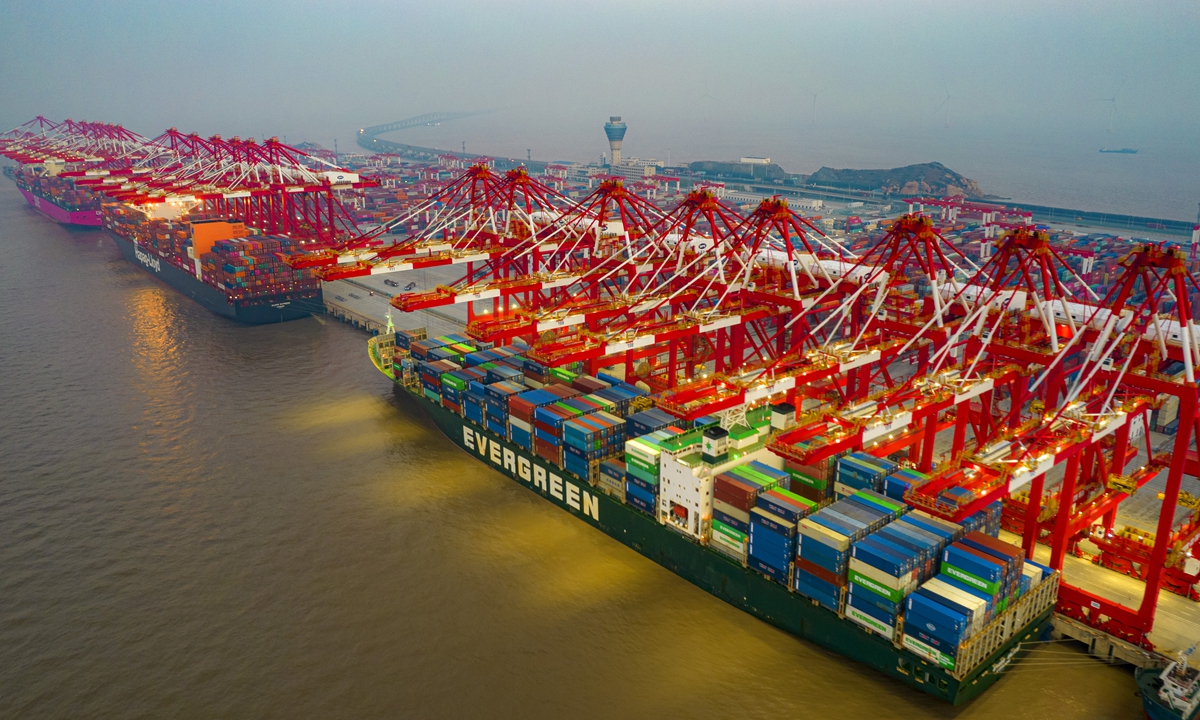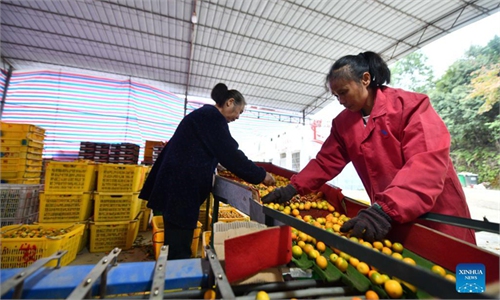
Container vessels berth at the Port of Yangshan to clear cargo around the clock in Shanghai on January 2, 2022. In 2021, the Port of Shanghai handled over 47 million standard containers, ranking first among the world's ports for the 12th consecutive year. Photo: VCG
The State Council, China's cabinet, on Tuesday called for efforts to ensure domestic supplies of commodities, as part of guidelines to stabilize exports and imports as a countercyclical buffer against uncertainty clouding the trade landscape.
Presently, the country's exports and imports are facing increased uncertainty, instability and imbalance, and the fundamentals of its trade operations remain unsound, the State Council said in an announcement on Tuesday while releasing a slew of countercyclical measures to prop up micro, small and medium-sized trade businesses.
Among the measures that are intended to secure orders, stabilize expectations and foster stable trade are efforts to coordinate and ensure stable commodity imports, revise and improve the list of retail imports via cross-border e-commerce, and broaden the import categories to better meet diversified consumption needs.
International consumption promotional activities are also being eyed to boost imports of consumer goods. In addition, overseas storage facilities got a mention in the guidelines, with financial institutions that offer cross-border financial services being encouraged to beef up financial support for traditional trade firms, cross-border e-commerce businesses and logistics firms so that they can build and utilize overseas warehouses.
On top of that, the guidelines proposed an acceleration of export tax rebates and the improvement of export credit insurance services to better protect smaller trade firms against the cancellation of orders before shipments.
The yuan exchange rate, according to the guidelines, will also be kept at a reasonable level and trade firms are expected to increase their awareness and capabilities when it comes to averting foreign exchange risks. A push for yuan-denominated cross-border settlement was also among the pro-trade measures.
The guidelines are seen as preparing the economy for a more challenging year in 2022, although exports and imports remained strong over the past year.
The tone-setting Central Economic Work Conference in December identified demand contraction, supply shocks and weakening of expectations as major headwinds confronting the economy.
In the first 11 months of the year, the country's exports and imports rose 22 percent year-on-year to 35.39 trillion yuan ($5.56 trillion), topping the full-year number for last year (32.16 trillion yuan), according to customs data.
The superlative trade figures are even more conspicuous in US dollar terms amid the yuan's strength. The country's exports and imports rose 31.3 percent year-on-year to $5.47 trillion in US dollar terms, per customs data.


